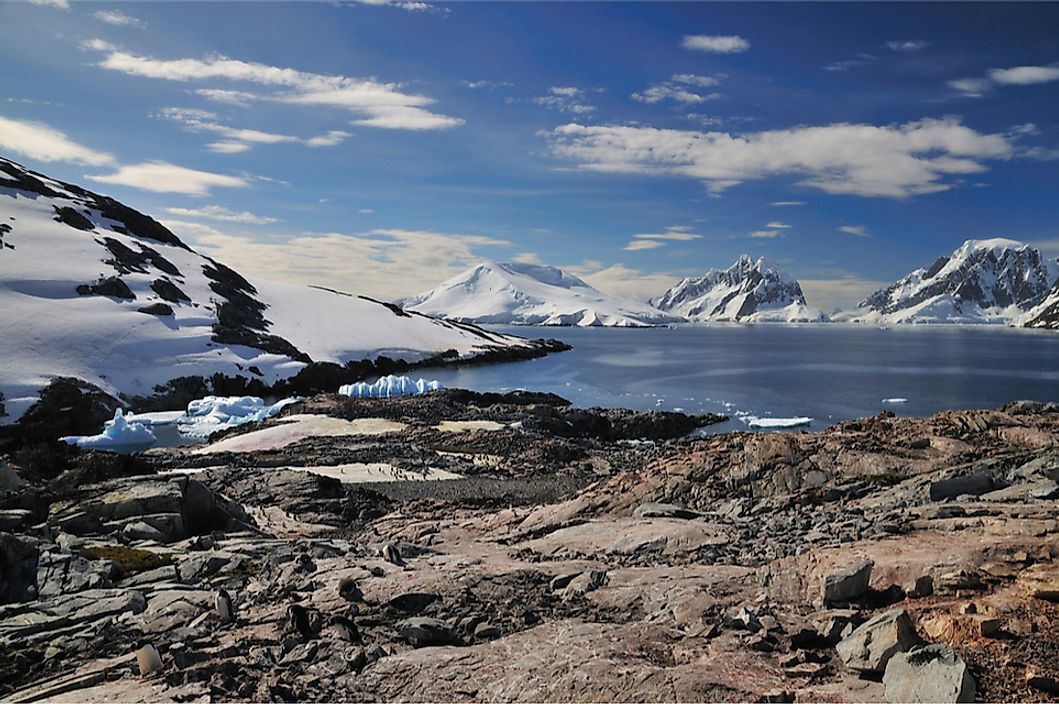The 10 Largest Antarctic Islands

The islands of Antarctica are among the most remote in the world. Most are permanently covered by ice and are nearly completely uninhabitable. Many of these islands were discovered by chance during expeditions to Antarctica and some serve as research stations studying the effects of climate change. All islands south of the Antarctic Convergence are classified as Antarctic islands. According to the Antarctic Treaty, no country can claim exclusive ownership of these islands.
5. Alexander Island
Alexander Island is Antarctica’s largest island. The island is located to the west of the Antarctic Peninsula’s Palmer Land on the Bellingshausen Sea. Alexander Island is separated from mainland Antarctica by the George VI Sound and Marguerite Bay. The island occupies an area of about 49,070 square km. After Devon Island in Canada, Alexander Island is the world’s second biggest uninhabited island. The island was discovered by a Russian expedition team on January 28, 1821, and named after Russian Tsar Alexander I. The island is ice-covered in most parts and its landscape is mountainous with many exposed nunataks. Several glaciers flow off the island into the surrounding ocean. The Hodgson Lake is another striking geographical feature of the Alexander Island, which is a large subglacial lake that lies hidden beneath perennial ice sheets.
4. Berkner Island
With an area of 43,873 square km, Berkner Island is the second biggest Antarctic island. The island is an ice rise or an ice dome, which protrudes out of the water from bedrock lying below the sea level. The island is named after American physicist Lloyd Berkner. If the ice rise melts, the island will completely disappear from the surface of the ocean.
3. Thurston Island
The third largest island in Antarctica is the Thurston Island. It occupies an area of 15,700 square km. The Peacock Sound separates the island from mainland Antarctica. The island was spotted on February 27, 1940, from the air and named after W. Harris Thurston, an American businessman who was an important sponsor of Antarctic expeditions.
2. Carney Island
Carney Island, encompassing an area of 8,500 square km, is the fourth largest island in Antarctica. The island is located along the West Antarctic portion of Marie Byrd Land. The island is located between the Wright Island and Siple Island. It is named after US Navy Admiral Robert Carney, who was involved in numerous United States missions to Antarctica in the 1950s.
1. Roosevelt Island
Roosevelt Island is the fifth largest island in Antarctica. The island spans an area of 7,910 square km. The ice-covered island lies below the eastern portion of the Ross Ice Shelf. The central ridge of Roosevelt Island is 1,804 ft above sea level, but most of the island is not visible at ground level due to the ice sheet covering the entire island and the surrounding area. The island is named after the former United States President Franklin D. Roosevelt.
The 10 Largest Antarctic Islands
| Rank | Island | Area (km²) |
|---|---|---|
| 1 | Alexander Island | 49,070 |
| 2 | Berkner Island | 43,873 |
| 3 | Thurston Island | 15,700 |
| 4 | Carney Island | 8,500 |
| 5 | Roosevelt Island | 7,910 |
| 6 | Siple Island | 6,390 |
| 7 | Adelaide Island | 4,463 |
| 8 | Spaatz Island | 4,100 |
| 9 | James Ross Island | 2,598.4 |
| 10 | Ross Island | 2,460 |











